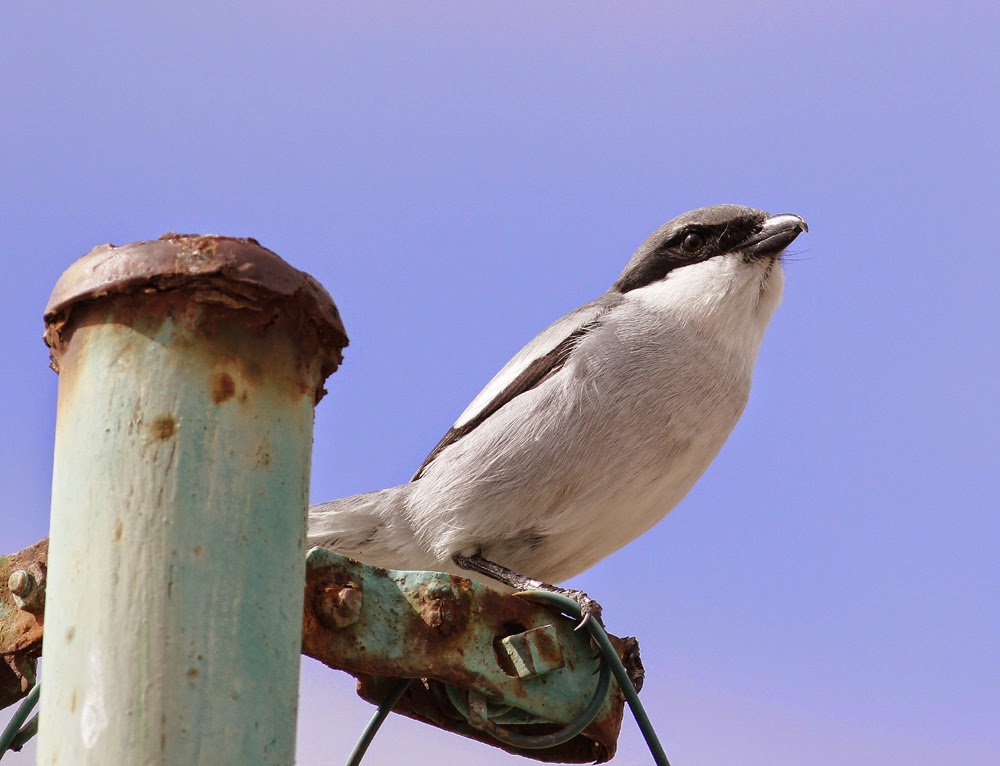The car headed east towards the hills of Oakenclough where I was meeting Andy for my first ringing session since returning from holiday in Lanzarote. There was a slight frost with both clear skies and the radio forecast promising a sunny day ahead.
Andy had managed a successful catch of 40 birds in between bouts of wind, rain and mild temperatures before the frost and snow of late January; today would be our first opportunity to gauge the effect of a week or more of colder weather.
Our four hours proved to be rather slow in both activity and numbers caught whereby we speculated that birds had moved from this high ground location to more urban locations a mile or three away where the temperatures would be more to their liking.
We caught just 25 birds, 21 new ones and 4 recaptures, figures which support the idea of birds moving away from the site if only temporarily.
New birds: 8 Blue Tit, 6 Great Tit, 3 Chaffinch and singles each of Goldfinch, Lesser Redpoll, Coal Tit and Robin. Recaptures: 2 Chaffinch and 1 each of Robin and Coal Tit.
Lesser Redpoll - first winter female
Chaffinch - first winter female
The slow ringing left time to find a number of birds in and around the site.
Brief but proper sightings of both female and male Sparrowhawk leaving the same stretch of woodland suggests a pair close by in coming weeks. A pair of Ravens flew overhead croaking as they went. A pair of Pied Wagtails stuck close together on a nearby roof, and on the neighbouring reservoir, 400 Greylags, 60+ Mallard, 7 Tufted Duck and 5 Cormorant.
In the woodland 10+ Chaffinch, 3+ Siskin and 2 Great-spotted Woodpecker.
Greylag
Cormorant
There’s more birding, ringing or photography or Lanzarote soon on Another Bird Blog.
























































.JPG)







.jpg)











